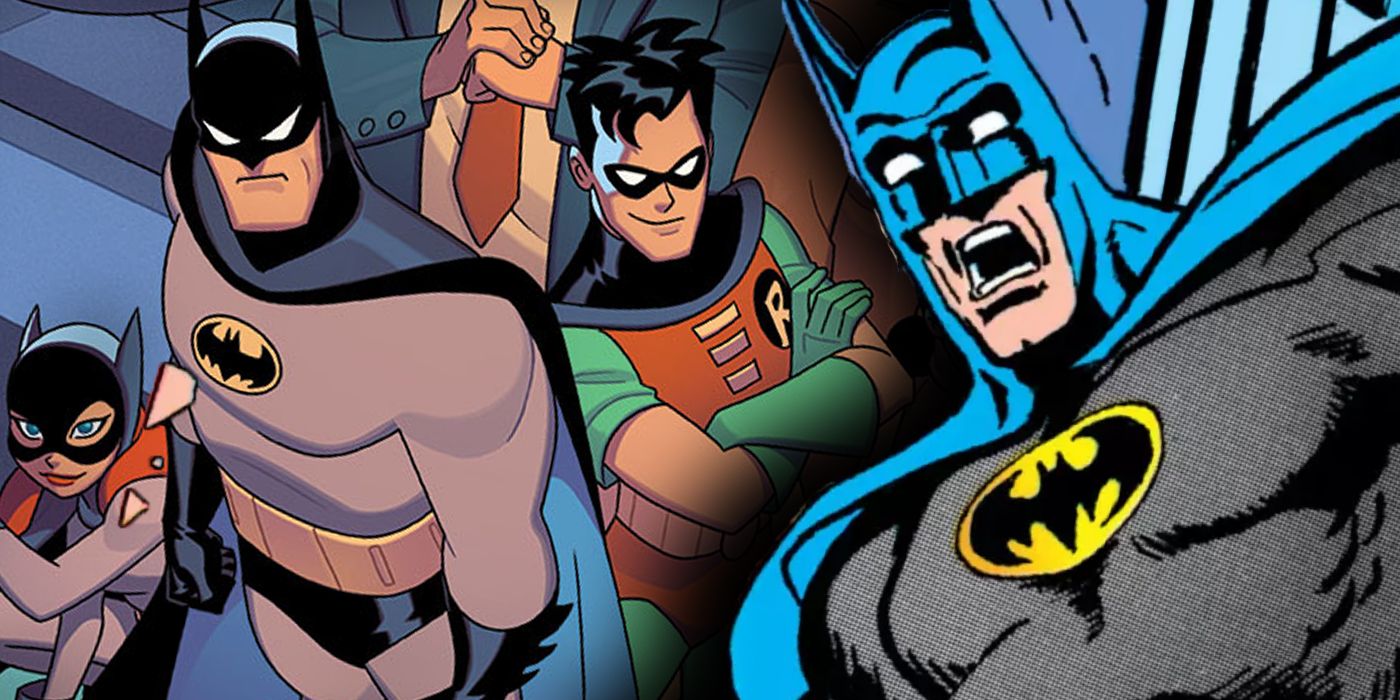
Today, we look at how DC Comics' Batman comic book series paid homage to the debut of the Batman: The Animated Series.
In Meta-Messages, I explore the context behind (using reader danjack's term) "meta-messages." A meta-message is where a comic book creator comments on/references the work of another comic book/comic book creator (or sometimes even themselves) in their comic. Each time around, I'll give you the context behind one such "meta-message."
Over the history of animated adaptations of comic book properties, the involvement of the comic book companies in the adaptations has been really hit and miss over the years. It really depends on how involved the comic book company was in the production of the series. For instance, when Filmation was working on DC characters in the 1960s, the company worked directly with DC, which co-produced the series, and as such, on the first Filmation DC series, 1966's Adventures of Superman, DC writers like George Kashdan, Leo Dorfman and Bob Haney all worked on the stories and Superman artist Curt Swan eventually had his art used as the basis for the series and Superman editor, Mort Weisinger, had final say over the stories.
When the series expanded to add Aquaman in 1967, creating the The Superman/Aquaman Hour of Adventure, George Kashdan worked as a bit of a consulting producer on the series (as well as writing scripts himself). As a result, he actually coordinated the introduction of Black Manta in the series as well as the comics, specifically holding back the introduction of Black Manta in the comic so it would come out right before the cartoon series in the Summer of 1967 (the way comic book magazines worked at the time, a comic book released in June would typically remain on the stands until October, so a September release for the cartoon was perfect timing).
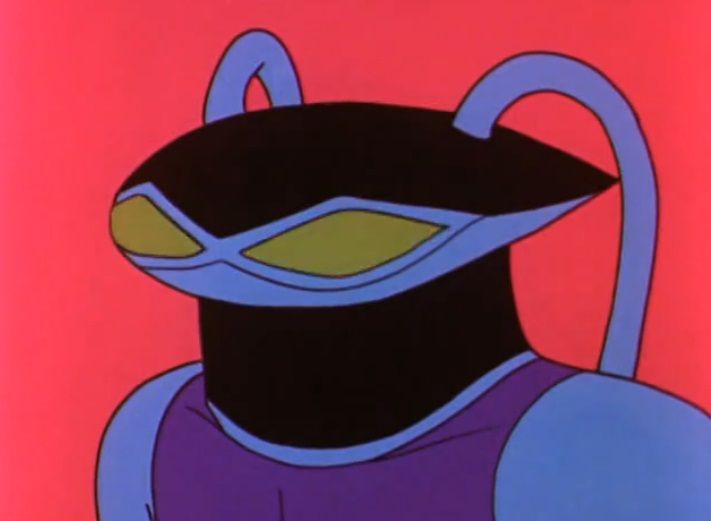
When Hanna-Barbera took over the DC characters license in the 1970s, however, there was much less of a connection between the series and the comics.
By the time that work started on Batman: The Animated Series, though, the show was now being done specifically by Warner Bros. Animation, which was a sister company of DC Comics, so the connection was a lot more direct. In his brilliant oral history of Batman: The Animated Series in Back Issue #99 from TwoMorrows, my pal John Trumbull interviewed the various figures behind the series and they discussed how DC had to sign off on the stories. Paul Levitz noted, DC had approval rights for the series and the material. Obviously, we’re a sister company so it’s not really a matter of what the legal rights are, but our job within the company was to protect our property and that gave us certain powers of approval."
At one point, the late, great Martin Pasko and Alan Burnett actually flew to New York to visit DC Comics' archives where Paul Levitz showed them all of Batman's past comic books to help with ideas for stories. Here's another snippet from John's amazing oral history...
MARTIN PASKO: Alan and I also made a trip to New York to scour the DC library for stories to adapt and to give Alan a crash-course in Batman lore. I was there to guide him through the past continuity and ask [Batman assistant editor] Kelley Puckett to pull certain stories for us.
DENNIS O’NEIL: [They] spent days in DC’s library, just generally scarfing up 50 years’ worth of Batman stories and then sending heaps of Xeroxes back to L.A. So they were taking this very seriously.
ALAN BURNETT: Marty and I sat in a room at DC in New York while Paul Levitz, the VP of DC Comics at that time and a former writer, went thru literally decades of Batman and Detective Comics beginning in mid-’50s. He had read them all and has an encyclopedic mind. I was quite impressed.
PAUL LEVITZ: I had read every Batman story until that point, which not too many people had. That’s something that would be impossible if you read everything now, with more than twice as much material existing. So I had a fairly solid memory of some of the old stuff besides my own fun of reading it as a kid, as a reader. And, of course, Marty was very knowledgeable of the material as well and Burnett was an old comics fan. We probably picked the brains of some of the other people in the office as well
So there was a good deal more interaction with DC and this series that with a typical animated series. This was even extended when DC decided to introduce one of the new characters specifically created for the cartoon series, Renee Montoya, in a January 1992 issue of Batman #475 (by Alan Grant and Norm Breyfogle)....
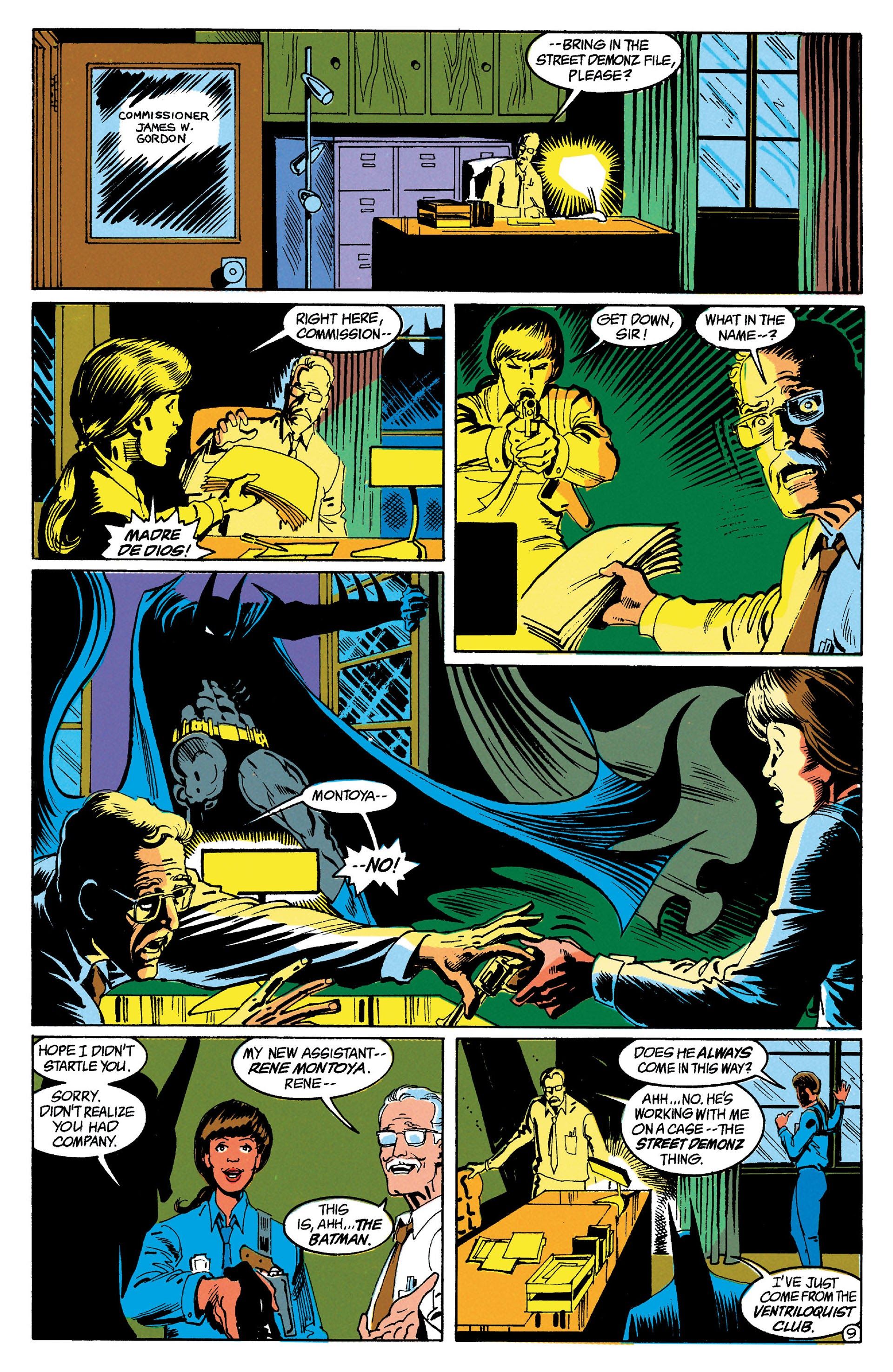
so that she would already be an established DC Comics character for nearly a year before she first appeared on the animated series...
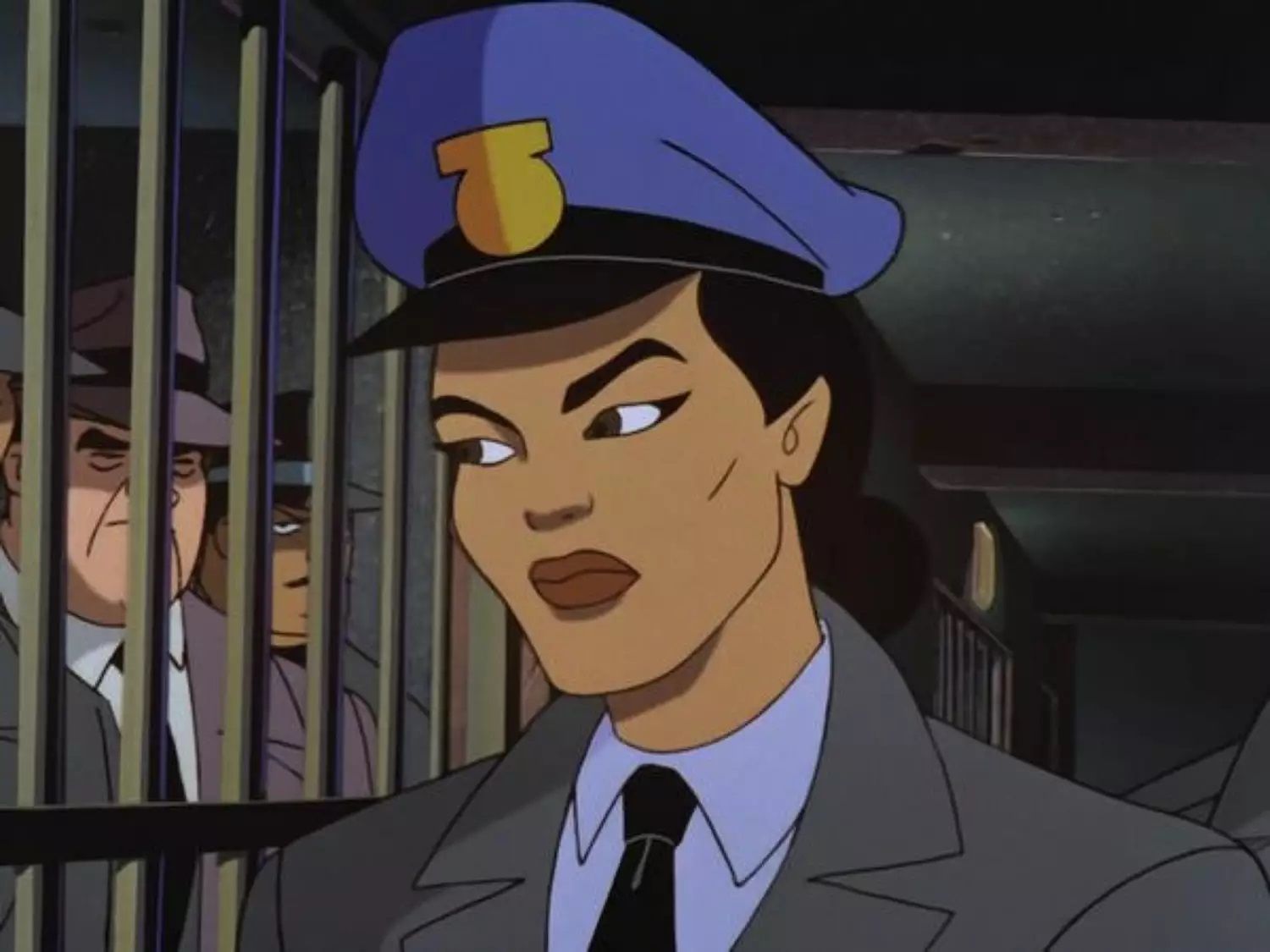
Okay, so in September of 1992, Batman: The Animated Series hit the airwaves.
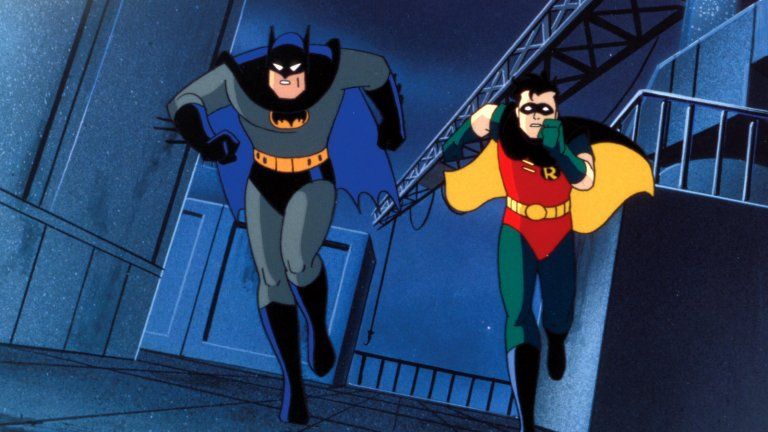
That same month saw the release of Batman #486 (by Doug Moench and Jim Aparo). The issue saw Batman hunting down the villainous Metalhead. However, Batman had JUST finished a brutal fight with Black Mask's False Face Gang and he likely had his nose broken, so he was still bleeding as he just kept on trying to keep on with his mission. This was all part of Moench's set up for Knightfall, to show that months before Bane started his targeted attack on Batman, the Dark Knight was already getting burned out...
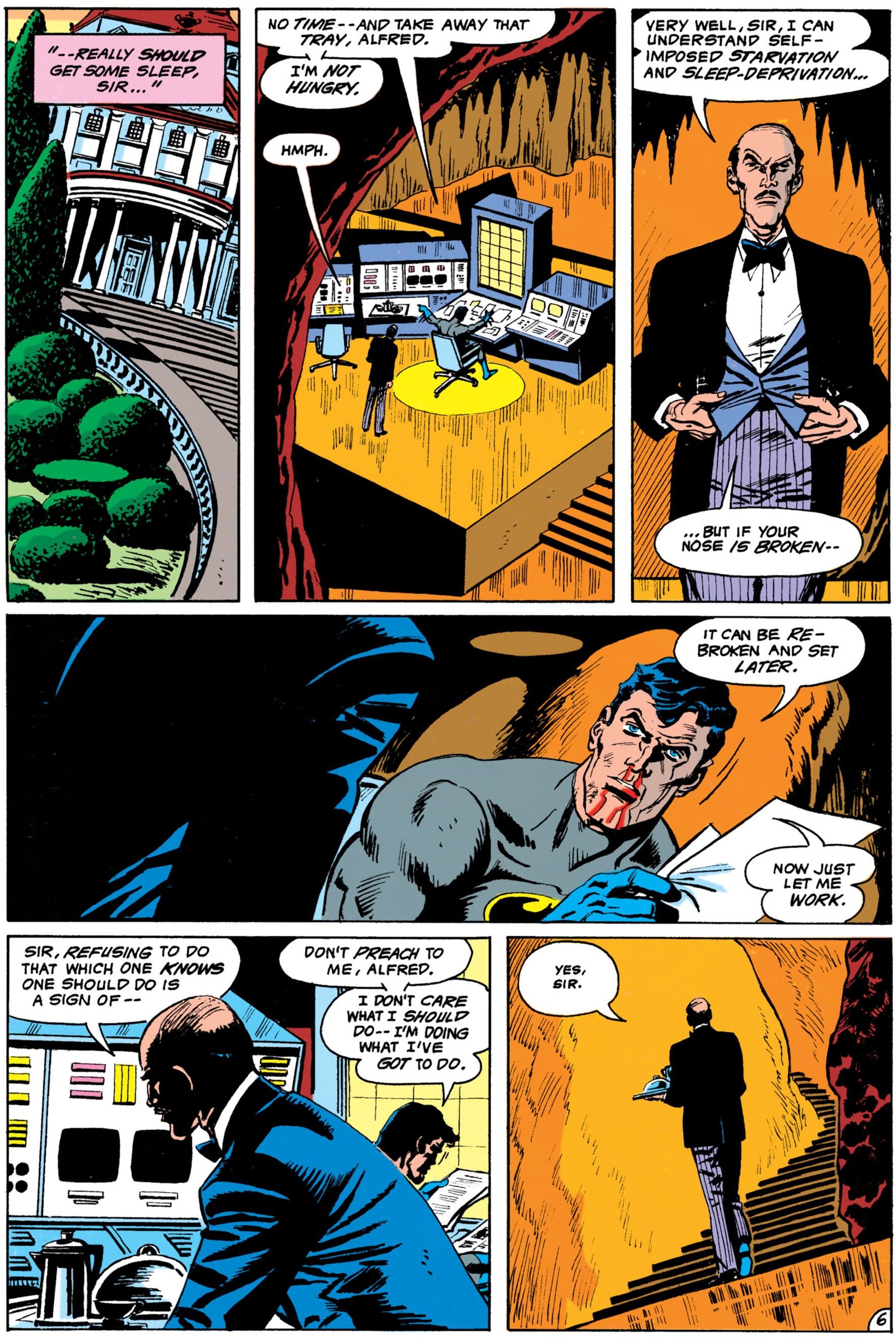
In any event, in a cute bit designed as an homage to the then-new release of the animated series, Alfred and Robin see a shot of Batman in the animated art style, although we discover that it is part of a computer program that Batman's technological assistant, Harold, was de-bugging while enjoying some of the food that Batman refused to eat because he was too busy...
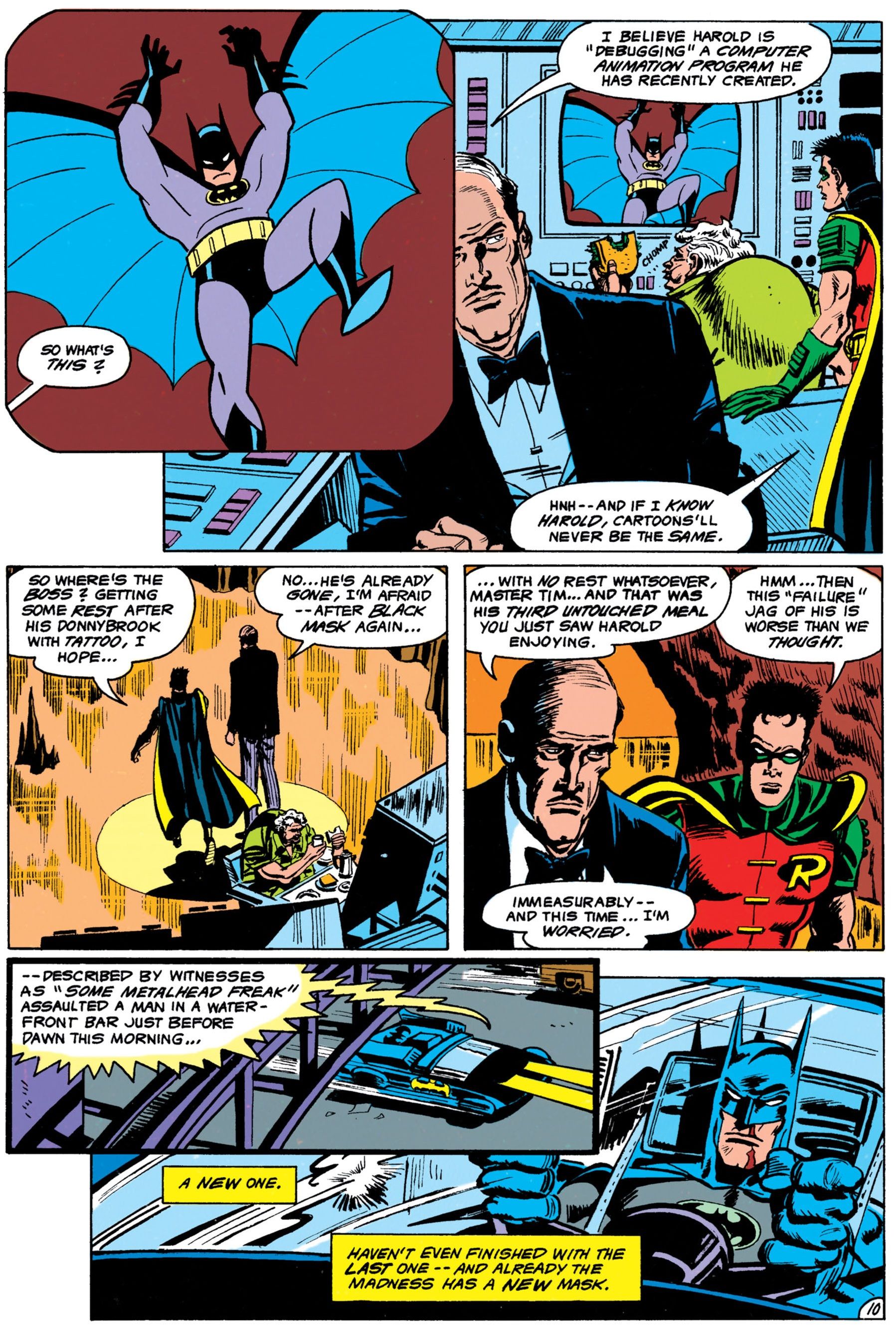
That is a very cute little homage by Moench and Aparo.
If anyone else has a suggestion for a future Meta-Messages, drop me a line at brianc@cbr.com
0 Comments